Mary of Nazareth: My Aunt in Jesus Christ
Devotions are usually associated with images. We need images to pray. Without images, imaginative prayer is difficult. I have experienced different imageries in different places, but none of them feels satisfactory to me today.
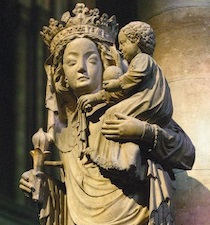 Medieval art, Gregorian music and architecture are masterpieces of Western Christianity. For André Malraux, art critic and minister of culture under de Gaulle, it is in Christian art that the divine is most sublimely represented in human form, in the images of Christ and the saints. Gothic iconography and Gregorian music appeal mostly to the educated elite which is shrinking. There are many neo-gothic churches in the US but usually they do not exhibit great medieval art.
I like the Virgin Mary of the Notre Dame Cathedral in Paris. Are you a Gothic art lover?
Medieval art, Gregorian music and architecture are masterpieces of Western Christianity. For André Malraux, art critic and minister of culture under de Gaulle, it is in Christian art that the divine is most sublimely represented in human form, in the images of Christ and the saints. Gothic iconography and Gregorian music appeal mostly to the educated elite which is shrinking. There are many neo-gothic churches in the US but usually they do not exhibit great medieval art.
I like the Virgin Mary of the Notre Dame Cathedral in Paris. Are you a Gothic art lover?
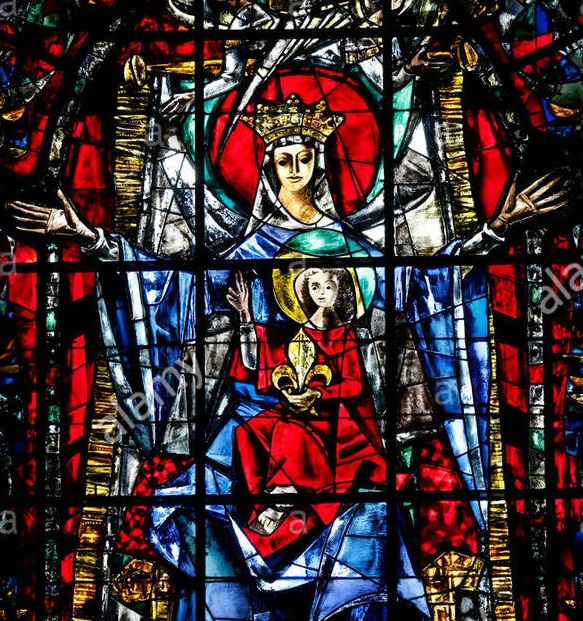 Childhood images of God and the saints are deeply rooted in one's imagination. I would include among my childhood images the stained glass window of the Strasbourg cathedral. The nostalgia about childhood memories is easily destroyed by change. Coming back to my childhood parish after an absence of 30 or more years, I found that the statues had been removed and the ceiling paintings whitewashed. That was the end of my nostalgia. What are the childhood images that still nourish your faith?
Childhood images of God and the saints are deeply rooted in one's imagination. I would include among my childhood images the stained glass window of the Strasbourg cathedral. The nostalgia about childhood memories is easily destroyed by change. Coming back to my childhood parish after an absence of 30 or more years, I found that the statues had been removed and the ceiling paintings whitewashed. That was the end of my nostalgia. What are the childhood images that still nourish your faith?
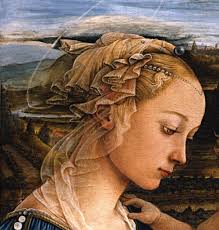 Renaissance art is very inspiring. Paintings of Fran Angelico or Raphael are often printed on Christmas cards. Renaissance artists sought to represent ideal beauty, especially feminine beauty, leading to hyper-feminization and hyper-masculinization, and gender stereotyping. In Italian paintings, the Virgin Mary is often seen as an ideal beauty queen. I have never been very fond of such iconography. Italian Americans most likely feel close to their Renaissance heritage. How do you feel?
Renaissance art is very inspiring. Paintings of Fran Angelico or Raphael are often printed on Christmas cards. Renaissance artists sought to represent ideal beauty, especially feminine beauty, leading to hyper-feminization and hyper-masculinization, and gender stereotyping. In Italian paintings, the Virgin Mary is often seen as an ideal beauty queen. I have never been very fond of such iconography. Italian Americans most likely feel close to their Renaissance heritage. How do you feel?
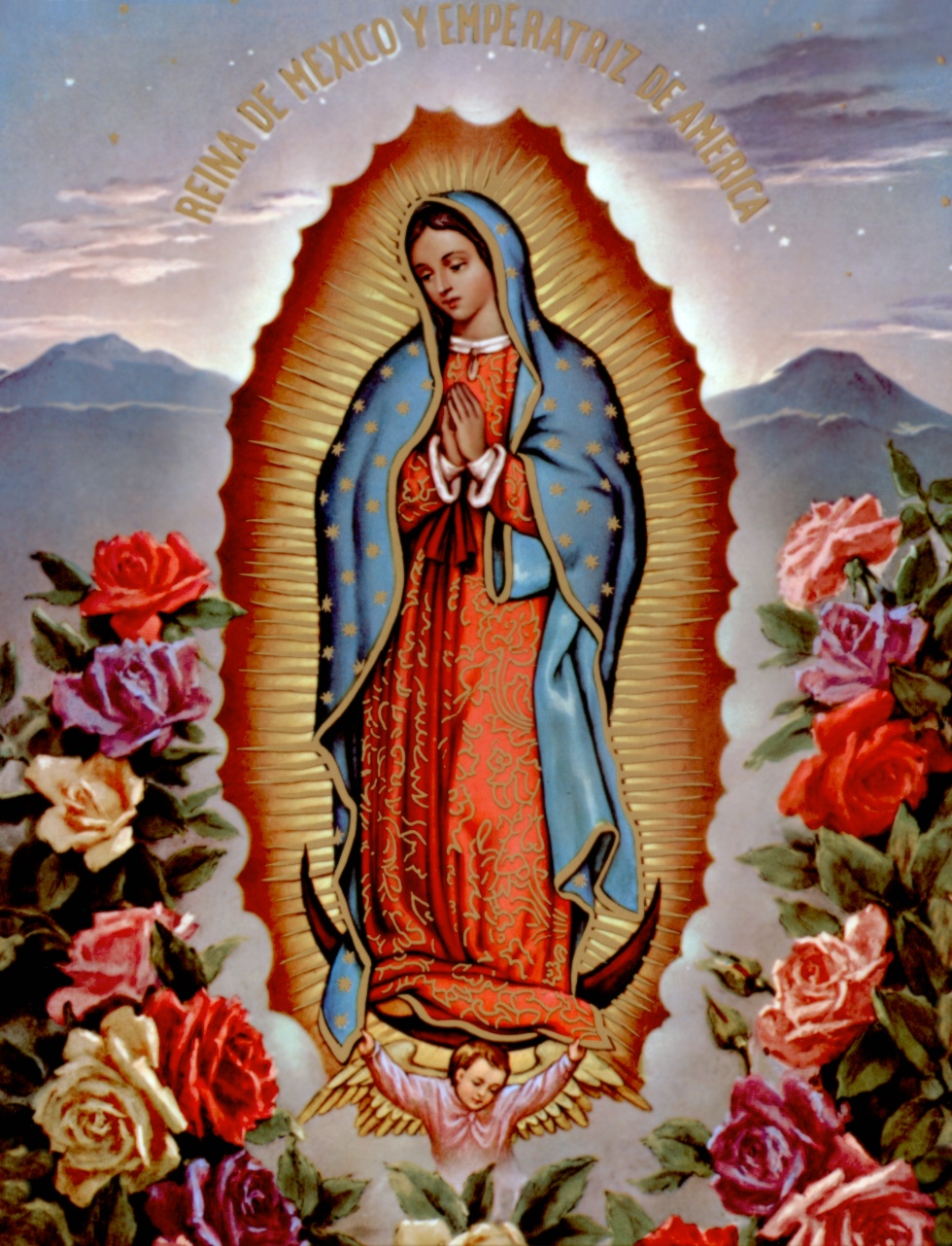
Traditional devotions usually involve the rosary, First Friday Masses, Our Lady of Lourdes, Fatima, Guadalupe, Mount Carmel, and local saints. These devotions have a clear iconography, often reflecting the uninspiring art of the 19th century religiosity. Many parishes have devotional statues where the faithful can light a candle. I have visited Lourdes, Guadalupe, and Mount Carmel but I am not eager to return. What are the alternatives?.
![]() By making the liturgy "the summit toward which the activity of the Church is directed," Vatican II led to the decline of private devotions. In the past, the lives of saints were standard reading but over the last fifty years hagiography has lost its popular appeal. There is practically no recognized iconography either; there is a plurality of styles but no clear trend. Throughout the centuries Christians used images to foster their faith, but today in the modern cathedrals of Brasilia and Oakland there are no statues and no images.
By making the liturgy "the summit toward which the activity of the Church is directed," Vatican II led to the decline of private devotions. In the past, the lives of saints were standard reading but over the last fifty years hagiography has lost its popular appeal. There is practically no recognized iconography either; there is a plurality of styles but no clear trend. Throughout the centuries Christians used images to foster their faith, but today in the modern cathedrals of Brasilia and Oakland there are no statues and no images.
I am not fond of calling Mary our sister and the saints our companions. Bothers and sisters are equals, but tradition sees Mary as more than a sister among sisters, an equal among equals. The standard image of the communion of saints is that of “patron saints,” but the patron-client relationship was that of the condottieri and enlightened despots which popular piety has taken as its model and which is less appealing today.
I favor the relational pattern of mentorship: 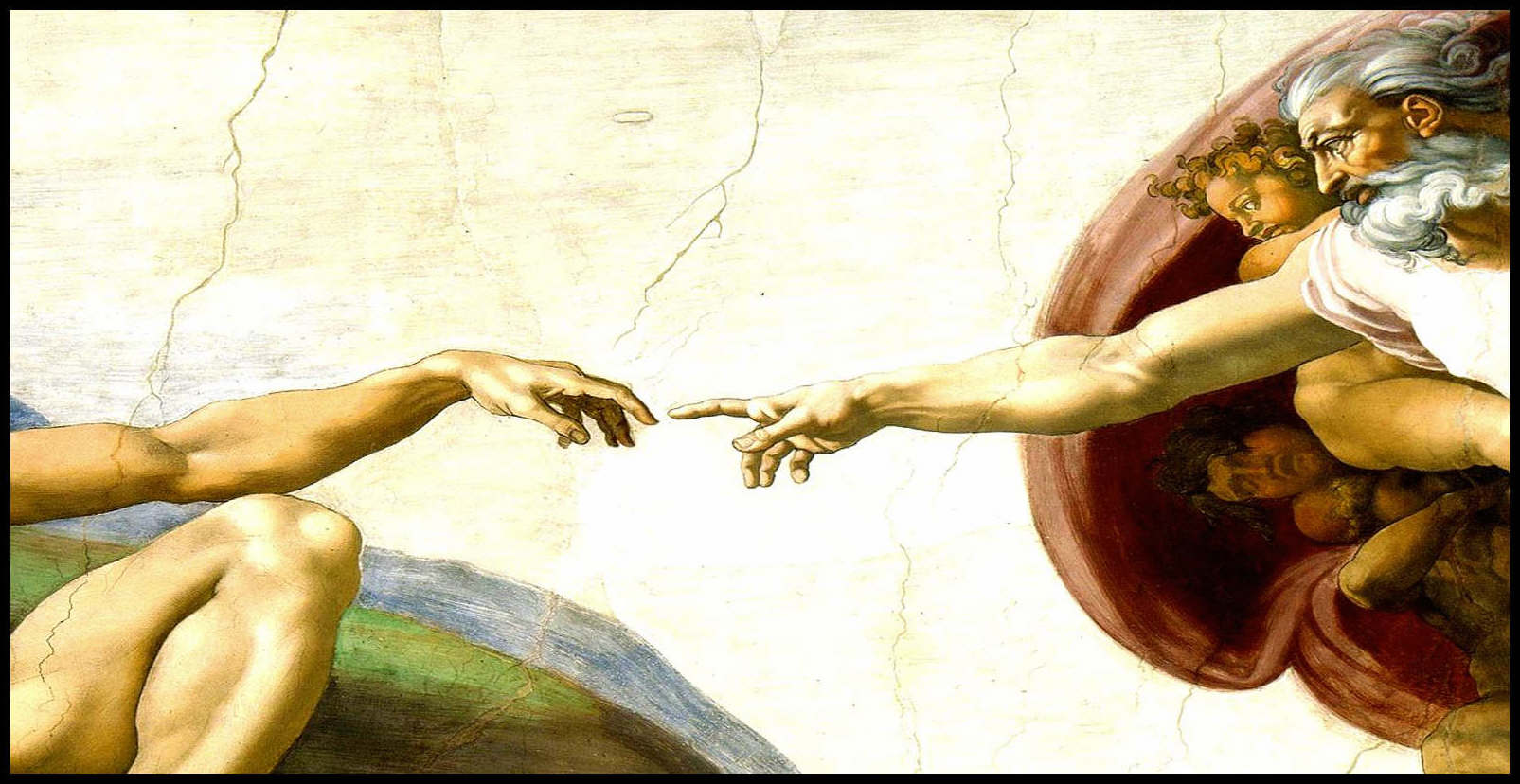 Mary and the saints can be our mentors and guides. The patron-client relationship is based the unequal power between the begging client and the all-powerful patron. Mentorship requires active engagement of the mind to get to know the model. It requires biblical intelligence to understand the biblical sources, and hagiographic knowledge to understand the lives of saints. Ultimately mentorship requires a mystical rapport, like that between creator and creature in Michelangelo's painting of creation.
Mary and the saints can be our mentors and guides. The patron-client relationship is based the unequal power between the begging client and the all-powerful patron. Mentorship requires active engagement of the mind to get to know the model. It requires biblical intelligence to understand the biblical sources, and hagiographic knowledge to understand the lives of saints. Ultimately mentorship requires a mystical rapport, like that between creator and creature in Michelangelo's painting of creation.
Today a grandparent, an aunt or uncle can be a child's guide when growing up. Mary and John the Baptist were Jesus' mentors. Their goal was that he grew and that they diminish. This is the goal of all mentors.
This reflection was prompted and inspired by the two Advent reflections by Francis Berna and Wilburn Stancil, and also the Theotokos lecture of Elizabeth Johnson. What is your understanding of the role of Mary in your life and the church?
COMMENTS
Reconnecting with Christmas memories
The most obvious recent experience for me is the mash up of reconnecting with my early years and earliest lit up memories. The favorite Christmas images and hymns trigger deep connections; not just in my more juvenal selves (though in those too), but in my more weathered, jagged reaching for the incarnation.
A number of years ago a female relative of mine, one who had long left behind the Christianity of her early years, arrived at my father’s house where the arthritic and tired patriarch had installed an artificial tree. She couldn’t believe he had left “the real” one in the past. (So who went out into the cold, wet night to retrieve a real one? The once warmed son! But really, I was happy to do it.) My relative was connected to the season, whether she consciously want to connect or not. Whether the creche was covered with plastic or not
I am pretty much a-liturgical. I live in my head, and like doing so. But something in the season of nativity works me, works in me, and connects the senses again to the actually quite incredible notion that divine love could come through a helpless child. What child is this, indeed! And after the crazy weeks leading up to the Big Holiday, I am growing more and more grateful that I have twelve days to ponder the light that is increasing, even as we return to the ordinary.
Dan Finucane
Saint Louis University
Finding My Place in the Story of the Epiphany
Growing up in Midwestern Nigeria, I was introduced to a Christianity that hardly spoke to my context. During Christmas season, I joyfully sang Christmas carols that spoke of the season of winter while living through the hot, dry, and windy Harmattan season. I went to sit on the laps of Santa Klaus that did not look like me. I never saw any black Santa.
These alienating experiences would not have mattered to me where it not for a singular experience I had some years ago. While working at a parish in southern California, a priest friend of mine had put up the image of a black Jesus on the altar to celebrate our universality in Christ during our parish Thanksgiving celebrations. Instinctively, I retorted when I saw the image, “that is not Jesus, Jesus is not black.” I was a graduate student, studying for the priesthood when I uttered those words.
The icons of the Christian faith I was introduced to were mostly alienating. It is not surprising, because Christianity came to sub-Saharan Africa via the colonizing ships of the European powers. My story took a different turn when I saw a painting of a black Magi visiting the infant Jesus. I saw myself being drawn to this image because of the truth it represented. Epiphany is where the story of Jesus becomes the story of all of humanity. The Magi represent all of us. This truth has become what gives meaning to all the Christmas carols I sing during the Christmas season. All my great expectations that began with Advent are realized in the epiphanic event that draws all creation to the source of life and meaning – the incarnate Christ.
Simon Aihiokhai
University of Portland
Mary and Images
My frequent gift to a couple when I preside at their wedding is a Nativity set. Part of it goes back to my Franciscan roots. Another aspect is to do with my part to have some religious imagery in "the modern home." My hope, my prayer, is that the crèche will inspire the couple to remember, and if needed, reconnect with their religious faith.
Often I have to search for just the right nativity set as my taste avoids the overly sentimental. A permanent fixture in my home is a Lladro "Holy Family" given by a very good friend. Figures that look a bit more rugged comprise my Christmas crèche.
As noted in my Advent reflection, the image of Guadalupe is the most striking for me at this point in my life. That image captures Mary's "Magnificat" in ways that more traditional images do not for me. An abstract painting of "Emmaus" graces my dining room.
While I believe that imagery is incredibly important, and part of the rich heritage of the Orthodox and Roman churches, I like "clean and modern," the noble simplicity that should mark Roman liturgical celebration - including church art and architecture.
Well aware of my personal taste, and the devotions connected to it, I also appreciate the wide variety of cultural and personal tastes in art, music, and devotion. I am not always sure how to balance the great diversity in the local parish. Thus, I find a certain benefit in being in academics and not pastoring a congregation.
Francis Berna
La Salle Universsity
Overcoming pre-Vatican II imagery of Mary
In addition to working for the diocese, and teaching at a Catholic university, I am also the pastor of the church of the Visitation. I, too, had difficulty with Mary until after the seminary. In fact, I did not completely understand mariology and Marian spirituality until after I earned my PhD in systematic and moral theology.
When I became pastor at Visitation, its spirituality was caught up in pre-Vatican II images of the Virgin. When I arrived, I placed an icon of the Visitation of the Blessed Virgin Mary in the middle of the main vestibule of the church. On either side of the icon, I placed an image of the Annunciation (a copy of a print by Henry Ossawa Tanner).
That summer I gave a lecture on the scriptural images of Mary and their various representations in art. I did not focus on Mary’s obedience and docility, but her Yes given with fortitude that brought salvation to humankind. I also focused on the words of Elizabeth to Mary, “For nothing is impossible with God.” I did this by describing each of the works of art of my presentation.
In addition, I placed a beautiful lithograph at the rear entry of the church, and used it in a retreat for our liturgical ministers. Finally, on both sides of the tabernacle I placed two reliefs that show the very human side of Mary. On the left is the Holy Family with Mary breast feeding the Baby Jesus. On the other side is a silver statue entitled the flight into Egypt, where Mary, even though exhausted, kept vigilant.
These works of art have moved my people to have a sense of the Mary similar to the one presented by Elizabeth Johnson in Truly our Sister, away from overly pietistic devotions.
John J. Slovikovski, pastor